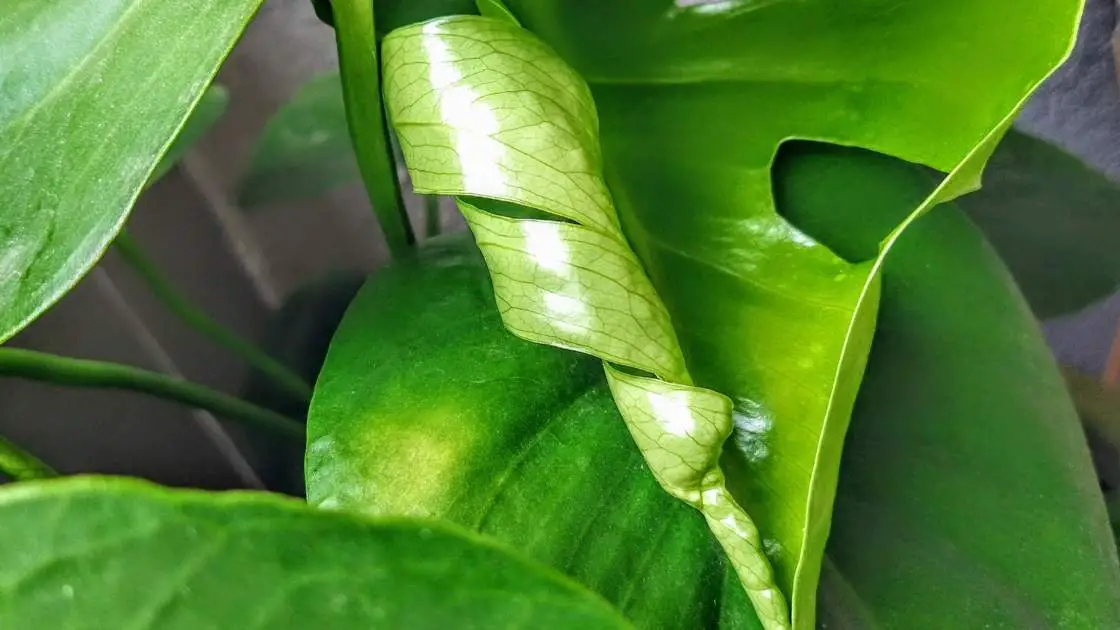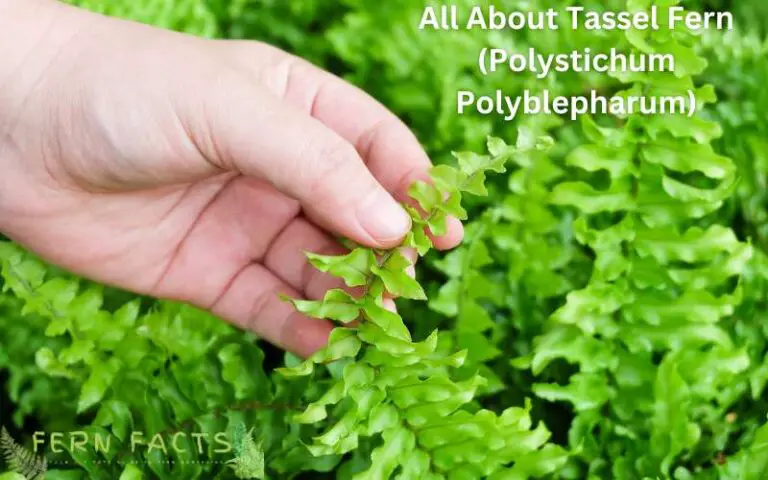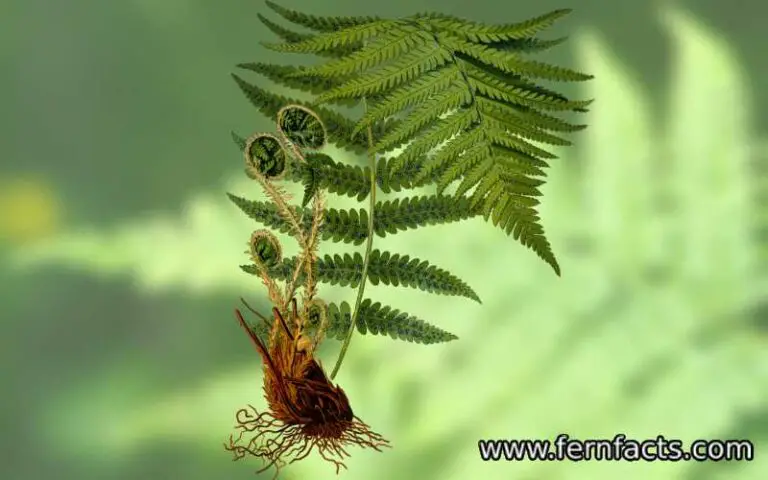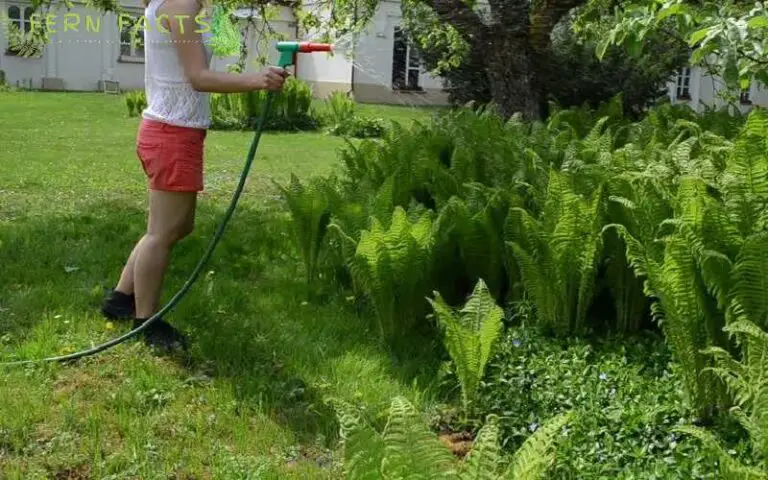Monstera Leaves Curling: Top Fixes for Lush Growth!
Monstera leaves curling is often due to underwatering, overwatering, or low humidity. Addressing these issues can help restore plant health.
Monstera plants, known for their stunning, fenestrated leaves, are popular among indoor gardeners. Proper care is essential to maintain their beauty and health.
Curling leaves can indicate a problem. Common causes include improper watering, inadequate humidity, or insufficient light.
Regularly check soil moisture and adjust watering practices to ensure optimal conditions.
Maintaining humidity levels between 60-80% can prevent leaf curling. Ensure your Monstera receives bright, indirect light for healthy growth.
Addressing these factors can help your plant thrive.
Prompt action can restore your Monstera’s lush appearance and prevent further issues. Proper care promotes vibrant, healthy foliage, enhancing your indoor garden’s appeal.

Potential Causes Of Monstera Leaves Curling
Monstera leaves curling can be a concerning sight for any plant lover. Understanding the potential causes of Monstera leaf curling is essential to keep your plant healthy and thriving.
Several factors can contribute to this issue, and addressing them promptly ensures your Monstera remains lush and vibrant.
Incorrect Watering
One of the most common causes of Monstera leaves curling is incorrect watering.
Both overwatering and underwatering can lead to this problem. It’s crucial to find the right balance to keep your Monstera happy.
Overwatering:
- Leads to waterlogged soil.
- Roots cannot breathe.
- Leaves start to curl.
Underwatering:
- Soil becomes too dry.
- Roots cannot absorb enough water.
- Leaves curl to conserve moisture.
To ensure your Monstera receives the right amount of water:
- Water thoroughly when the top 2 inches of soil are dry.
- Use well-draining soil.
- Check the soil moisture regularly.
Low Humidity Levels
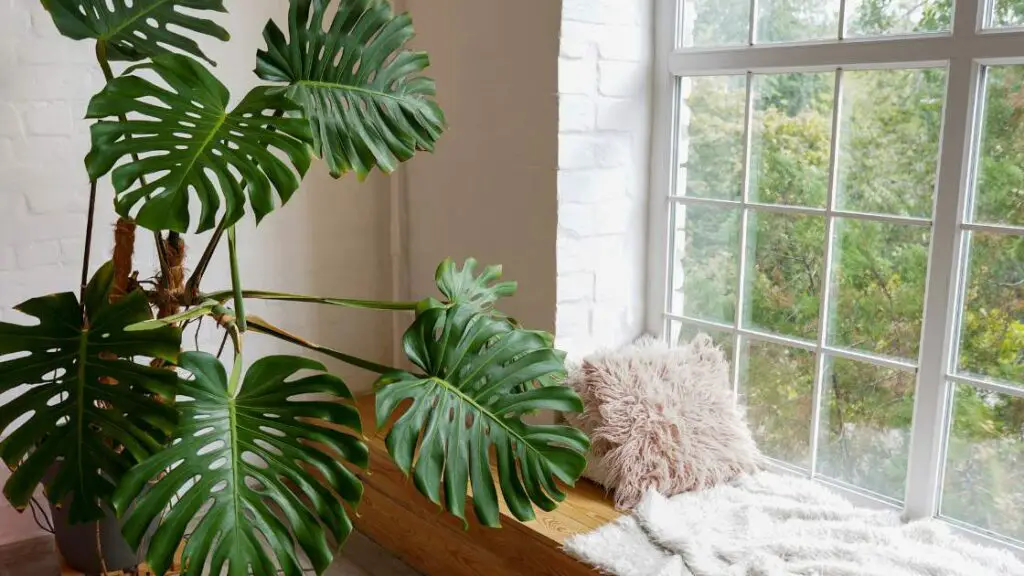
Monstera plants thrive in high humidity environments. Low humidity levels can cause their leaves to curl as they struggle to retain moisture.
Signs of low humidity:
- Dry, crispy leaf edges.
- Curled leaves.
- Brown leaf tips.
To increase humidity for your Monstera:
- Use a humidifier near your plant.
- Place the plant on a tray filled with water and pebbles.
- Mist the leaves regularly.
- Group plants together to create a micro-environment.
Poor Drainage
Poor drainage can significantly affect your Monstera’s health, leading to leaf curling. Proper drainage ensures excess water can flow out, preventing root rot and other issues.
Consequences of poor drainage:
- Waterlogged soil.
- Roots suffocate due to lack of oxygen.
- Leaves curl and turn yellow.
To improve drainage:
- Use pots with drainage holes.
- Place a layer of gravel or broken pottery at the bottom of the pot.
- Use a well-draining soil mix.
- Avoid letting the plant sit in standing water.
A healthy Monstera needs a balance of water, humidity, and proper drainage. Ensuring these conditions will help prevent leaf curling and keep your plant thriving.
Corrective Measures
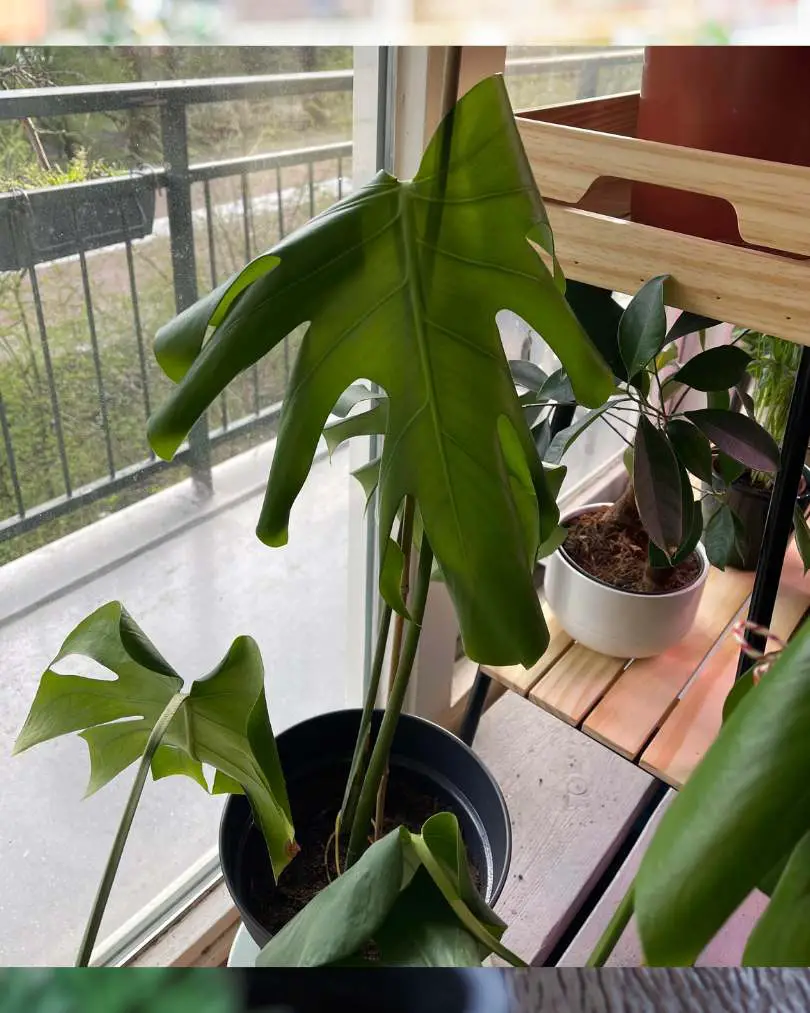
Monstera leaves curling can be a sign that your plant is experiencing stress. Identifying the root cause and applying the correct measures is crucial to restore your plant’s health.
Below are several corrective measures to help your Monstera thrive once again.
Adjusting Watering Practices
Improper watering is a common reason for Monstera leaves curling. Both overwatering and underwatering can lead to this problem.
Here are some tips to adjust your watering practices:
- Check soil moisture: Use a moisture meter or stick your finger about 1-2 inches into the soil. If it feels dry, it’s time to water.
- Water thoroughly: Ensure water reaches the root zone. Water until it drains out from the bottom of the pot.
- Drainage: Use pots with drainage holes to prevent water from sitting in the soil.
Consider the following table to understand the watering needs based on different seasons:
| Season | Watering Frequency |
|---|---|
| Spring | Once a week |
| Summer | Every 5-7 days |
| Fall | Once every 10 days |
| Winter | Once every 2 weeks |
Increasing Humidity
Monstera plants love high humidity. Low humidity can cause their leaves to curl. Here are some ways to increase humidity:
- Use a humidifier: Place a humidifier near your Monstera to maintain optimal humidity levels.
- Misting: Mist the leaves with water every few days.
- Humidity tray: Place a shallow tray filled with water and pebbles under the pot. As the water evaporates, it will increase humidity around the plant.
Ideal humidity levels for Monstera are between 60%-80%. You can use a hygrometer to monitor humidity levels.
If the air in your home is very dry, clustering your plants together can also help create a microenvironment with higher humidity.
Repotting
Repotting can help if your Monstera is root-bound or the soil has become compacted. Follow these steps to repot your Monstera:
- Choose the right pot: Select a pot that is 2 inches larger in diameter than the current one.
- Prepare fresh soil: Use a well-draining potting mix with added perlite or orchid bark for better aeration.
- Remove the plant: Gently take your Monstera out of its current pot. Loosen the roots to remove old soil.
- Repot: Place the plant in the new pot and thoroughly fill it with fresh soil and water.
Repotting should be done every 1-2 years or when you notice roots growing out of the drainage holes.
This ensures your Monstera has enough space to grow and access essential nutrients.
Pest Infestation
Monstera leaves curling can be a troubling sight for plant lovers. One common cause is pest infestation. Pests can damage your Monstera plant, leading to curling leaves. Identifying and treating these pests promptly is crucial for your plant’s health.
Identification
Identifying pests on your Monstera plant is the first step. Look for these signs:
- Small insects: Check the undersides of leaves for tiny bugs.
- Sticky residue: A sticky substance can be a sign of pests like aphids.
- Discolored spots: Yellow or brown spots may indicate pest damage.
- Webbing: Spider mites create fine webbing on the leaves.
Below is a table summarizing common pests and their signs:
| Pest | Signs |
|---|---|
| Aphids | Sticky residue, yellowing leaves |
| Spider Mites | Webbing, tiny dots on leaves |
| Mealybugs | White cottony spots |
Treatment
Treating pest infestation involves a few steps:
- Isolate the plant: Keep the affected plant away from others.
- Manual removal: Use a damp cloth to wipe off insects.
- Insecticidal soap: Spray leaves with insecticidal soap.
- Neem oil: Neem oil is effective against many pests.
Here is a step-by-step treatment plan:
- Step 1: Inspect your plant thoroughly.
- Step 2: Wipe leaves with a damp cloth.
- Step 3: Apply insecticidal soap or neem oil.
- Step 4: Monitor your plant for a few weeks.
Regularly check your Monstera to ensure pests don’t return. Consistent care helps keep your plant healthy and vibrant.
Disease

Monstera leaves curling can be alarming for plant lovers. One common cause is disease. Diseases can affect the plant’s health, making the leaves curl.
Recognizing the signs early and knowing how to treat them is key to keeping your Monstera thriving.
Recognizing Symptoms
Spotting disease in your Monstera early is crucial. Look for these common symptoms:
- Yellowing Leaves: Discolored leaves can be a sign of disease.
- Brown Spots: Fungal infections often cause brown or black spots on leaves.
- Wilting: The plant might struggle with a disease if it looks droopy.
- Leaf Curling: Leaves curling inward or downward can indicate a problem.
Here’s a table summarizing common diseases and their symptoms:
| Disease | Symptoms |
|---|---|
| Root Rot | Yellow leaves, mushy roots, and leaf curl |
| Powdery Mildew | White powder on leaves, distorted growth |
| Bacterial Leaf Spot | Water-soaked spots, yellow halos |
Regularly inspect your Monstera for these signs. Early detection can prevent severe damage.
Treatment Options
Once you recognize the symptoms, treating the disease promptly is essential. Here are some effective treatment options:
- Remove Affected Leaves: Cut off diseased leaves to prevent spread.
- Improve Air Circulation: Space out plants to reduce humidity and fungal growth.
- Use Fungicides: Apply fungicides to treat fungal infections.
- Change Watering Habits: Water less frequently to avoid root rot.
- Repot if Necessary: Use fresh soil to eliminate pathogens.
Here’s a quick reference for treatments:
| Symptom | Treatment |
|---|---|
| Yellowing Leaves | Check soil moisture, reduce watering |
| Brown Spots | Apply fungicide to improve air circulation |
| Wilting | Ensure proper watering, check for pests |
Monitor your Monstera after treatment to ensure recovery. Healthy care practices will help prevent future issues.
Nutritional Deficiencies
Monstera leaves curling can be a sign of various issues, but one common cause is nutritional deficiencies.
Proper nutrition is essential for the healthy growth of Monstera plants. Without the right nutrients, leaves may curl, turn yellow, or develop brown spots.
Understanding these deficiencies can help you provide the right care for your plant.
Identifying Lack Of Nutrients
Recognizing nutrient deficiencies in Monstera plants is crucial. Each nutrient plays a specific role in the plant’s health. When a nutrient is missing, it shows in the plant’s appearance.
Here are some common signs:
- Yellow Leaves: Often a sign of nitrogen deficiency.
- Brown Leaf Tips: Indicates a lack of potassium.
- Pale Leaves: Can suggest a magnesium deficiency.
- Weak Growth: This may be due to phosphorus deficiency.
To help you identify these deficiencies better, refer to the table below:
| Nutrient | Deficiency Symptoms |
|---|---|
| Nitrogen | Yellowing of older leaves |
| Potassium | Brown leaf tips and edges |
| Magnesium | Pale leaves with dark veins |
| Phosphorus | Weak and stunted growth |
By observing these signs, you can determine which nutrient your Monstera lacks. This will guide you in correcting the problem.
Feeding The Plant
Once you’ve identified the nutrient deficiency, the next step is to feed your Monstera the right nutrients. Here are some steps to follow:
- Choose the Right Fertilizer: Use a balanced, water-soluble fertilizer. Look for one with equal nitrogen, phosphorus, and potassium (e.g., 10-10-10).
- Follow Instructions: Always follow the package instructions for mixing and applying the fertilizer.
- Feed Regularly: Fertilize your Monstera every 4-6 weeks during the growing season (spring and summer).
- Monitor the Plant: Keep an eye on your plant’s response to the feeding. Adjust the frequency if needed.
For organic options, consider using compost or well-rotted manure. These can provide a slow-release form of nutrients. Additionally, fish emulsion and seaweed extract are excellent organic fertilizers.
Proper feeding ensures your Monstera receives the nutrients it needs. This helps prevent leaf curling and other deficiency symptoms.
Pruning And Maintenance
Monstera leaves curling can be a sign of stress. Proper pruning and maintenance help keep your Monstera healthy and vibrant.
Regular care ensures your plant thrives. Let’s dive into the essentials of pruning and maintenance for your Monstera.
Trimming Tips
Trimming your Monstera promotes healthy growth. Follow these tips to keep your plant in top shape:
- Use sharp, clean scissors: This prevents infection and makes clean cuts.
- Trim dead or yellow leaves: Remove these to redirect energy to healthy parts.
- Cut close to the stem: This reduces the chance of disease.
Trimming at the right time is crucial. Early spring is the best time for major trims. Here’s a table to guide you:
| Season | Action |
|---|---|
| Spring | Major trimming |
| Summer | Light trimming |
| Fall | Minimal trimming |
| Winter | Leave as is |
Always check your Monstera for any signs of pests or diseases. Early detection prevents bigger problems. A healthy trim keeps your plant happy.
Preventive Care
Preventive care is key to avoiding Monstera leaves curling. Follow these tips for a healthy plant:
- Water properly: Overwatering or underwatering can cause curling. Water when the top inch of soil is dry.
- Maintain humidity: Monsteras love humidity. Use a humidifier or mist the leaves regularly.
- Provide bright, indirect light: Direct sunlight can burn leaves. Keep your plant in a spot with filtered light.
Regularly check the soil and environment. Here’s a quick guide:
| Factor | Ideal Condition |
|---|---|
| Soil Moisture | Moist but not soggy |
| Humidity | 60-80% |
| Light | Bright, indirect |
Avoid sudden changes in the environment. Monsteras dislike drafts and temperature fluctuations. Consistency is key to healthy growth.
Feed your Monstera with a balanced fertilizer once a month during the growing season. This keeps the leaves lush and green.
By following these tips, you ensure your Monstera remains healthy and vibrant.
Frequently Asked Questions
Why Are My Monstera Leaves Curling?
Monstera leaves curl due to underwatering, overwatering, or low humidity. Check your plant’s soil moisture and adjust watering. Ensure proper humidity levels by misting or using a humidifier.
How Can I Stop Monstera Leaf Curl?
To stop Monstera leaf curl, maintain consistent watering and humidity. Ensure proper drainage and avoid direct sunlight. Regularly check for pests and use insecticidal soap if needed.
Does Low Humidity Affect Monstera Leaves?
Yes, low humidity causes Monstera leaves to curl. These plants thrive in high humidity environments. Increase humidity by misting leaves or using a humidifier to maintain healthy foliage.
Can Pests Cause Monstera Leaves To Curl?
Yes, pests like spider mites and thrips can cause Monstera leaves to curl. Regularly inspect your plant and use insecticidal soap or neem oil to treat infestations.
Conclusion
Properly caring for your Monstera plant can prevent leaf curling. Ensure it gets adequate water, light, and humidity. Regularly check for pests and diseases.
Your Monstera will thrive with these tips, displaying healthy, vibrant leaves. Happy gardening, and enjoy your flourishing green companion!

